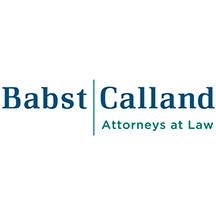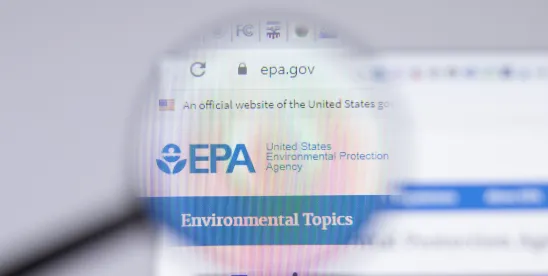On April 28, 2025, U.S. Environmental Protection Agency Administrator Lee Zeldin announced “major EPA actions to combat PFAS contamination.” Few details have been provided yet, but in emphasizing EPA’s goals in “strengthening the science,” “fulfilling statutory obligations and improving communication,” and “building partnerships” with states and Tribes, EPA signals that it may take a different regulatory approach to PFAS (per- and polyfluoroalkyl substances) than the prior administration.
The announcement does not expressly discuss the two major PFAS regulatory actions from the Biden administration – the designation of two PFAS compounds as hazardous substances under the Comprehensive Environmental Response, Compensation and Liability Act (CERCLA) and the promulgation of enforceable Maximum Contaminant Levels (MCLs) and non-enforceable health-based Maximum Contaminant Level Goals (MCLGs) for six PFAS compounds under the Safe Drinking Water Act (SDWA). Both rules are currently subject to judicial challenges (CERCLA challenge opening brief here; SDWA challenge opening brief here). However, in an implicit acknowledgment of concerns regarding the CERCLA rule raised by “passive receivers” of PFAS, including water utilities, EPA states that it will work with Congress and industry to establish a liability framework that operates on a “polluter pays” principle, to provide “certainty” to these passive receivers. This will require Congressional action, as only Congress, and not EPA, has the authority to shield passive receivers such as local water utilities from CERCLA liability.
The announcement further suggests EPA may take a more industry-friendly approach with respect to some of the proposed PFAS actions that were initiated during the Biden administration. For example, while it does not expressly reference regulations proposed under the Resource Conservation and Recovery Act (RCRA) to add 9 PFAS (including their salts and structural isomers) to the list of “hazardous constituents” in Appendix VIII of 40 C.F.R. Part 261 and to clarify that emerging contaminants – including PFAS – can be addressed under RCRA’s Corrective Action Program, EPA states that it will determine how to “better use RCRA” to address releases. EPA’s announcement also references the development of Effluent Limitations Guidelines (ELGs) under the Clean Water Act for PFAS manufacturers and metal finishers, and the evaluation of whether ELGs are necessary for other industries but does not provide concrete plans for such regulatory developments.
EPA’s announcement does not provide a timeline for any of its intended PFAS actions, and it is unclear how quickly EPA expects to implement them.
The full list of PFAS actions included in EPA’s announcement is below. EPA also stated that this list “is the first, not the last, of all decisions and actions EPA will be taking to address PFAS over the course of the Trump administration.”
Strengthening the Science
- Designate an agency lead for PFAS to better align and manage PFAS efforts across agency programs
- Implement a PFAS testing strategy under Toxic Substances Control Act (TSCA) Section 4 to seek scientific information informed by hazard characteristics and exposure pathways
- Launch additional efforts on air related PFAS information collection and measurement techniques related to air emissions
- Identify and address available information gaps where not all PFAS can be measured and controlled
- Provide more frequent updates to the PFAS Destruction and Disposal Guidance—changing from every three years to annually—as EPA continues to assess the effectiveness of available treatment technologies
- Ramp up the development of testing methods to improve detection and strategies to address PFAS
Fulfilling Statutory Obligations and Enhancing Communication
- Develop effluent limitations guidelines (ELGs) for PFAS manufacturers and metal finishers and evaluate other ELGs necessary for reduction of PFAS discharges
- Address the most significant compliance challenges and requests from Congress and drinking water systems related to national primary drinking water regulations for certain PFAS
- Determine how to better use RCRA authorities to address releases from manufacturing operations of both producers and users of PFAS
- Add PFAS to the Toxic Release Inventory (TRI) in line with Congressional direction from the 2020 National Defense Authorization Act
- Enforce Clean Water Act and TSCA limitations on PFAS use and release to prevent further contamination
- Use Safe Drinking Water Act authority to investigate and address immediate endangerment
- Achieve more effective outcomes by prioritizing risk-based review of new and existing PFAS chemicals
- Implement section 8(a)7 to smartly collect necessary information, as Congress envisioned and consistent with TSCA, without overburdening small businesses and article importers
- Work with Congress and industry to establish a clear liability framework that operates on polluter pays and protects passive receivers
Building Partnerships
- Advance remediation and cleanup efforts where drinking water supplies are impacted by PFAS contamination
- Work with states to assess risks from PFAS contamination and the development of analytical and risk assessment tools
- Finish public comment period for biosolids risk assessment and determine path forward based on comments
- Provide assistance to states and tribes on enforcement efforts
- Review and evaluate any pending state air petitions
- Resource and support investigations into violations to hold polluters accountable






 />i
/>i

